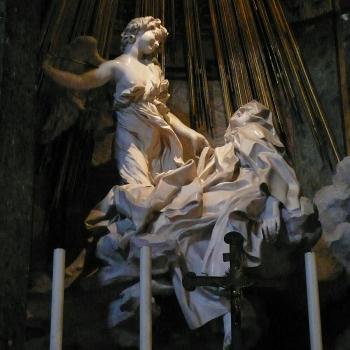Kent MacKenzie’s The Exiles played exactly once, at the 1961 Venice Film Festival, and then vanished for more than forty years. It was rediscovered in 2003, and you can find it now on Netflix–which you should do, for real, here’s why.
The Exiles follows a group of American Indian men and women over the course of one night at the very end of noir-era Los Angeles. The neighborhood where the film was shot was demolished–excuse me, I mean renewed–shortly afterward. The Native actors were mostly dead or vanished by the time the film was rediscovered.) Non-professional actors co-wrote the film and play slightly distorted versions of themselves. This is a glimpse into a vanished world–a way of life, if you’ll let me use a phrase which has such different racial connotations, gone with the wind.
First of all, the black-and-white film is beautiful. There’s a noirish edge to these wry, suffering or simmering faces lit by streetlights and neon signs. There’s a breathtaking scene set in front of a liquor store whose display window glows like Heaven on earth. There are headlights skating through tunnels, and a police baton glinting as it swings. When the bars close, dark shadows mass in front of them; and the finale, a drum circle and jingle dance on a hilltop, pulses with light and sound and life.
I was brought into the emotional pull of the movie very quickly. The central character is Yvonne, a married woman pregnant with her first child, who’s left behind as her husband Homer goes out on the town with his friends. (His basic attitude toward the night is, “I may get arrested tonight. Would you like to be an accomplice or a victim?“) Yvonne wanders the streets looking in shop windows, and eventually ends up with her closest woman friend. Homer pushes his ramshackle crew to a diner, a card game, the house of a friend’s girlfriend and son–dissatisfied, restless, unable to relax and enjoy the drinking and the driving and the dancing. We’ve all had these nights really, where it takes ten minutes of repetitive exhortation before people so much as stand up from the bar. The movie’s one daylight scene is a memory/fantasy: Homer leans against the liquor-store wall and reads a letter from home, from the reservation, and pictures its sun-soaked, broken-down houses, and a horse which travels into the distance.
There’s a lot of casual manhandling of women here. Several scenes in which girls are grabbed and either yank themselves away or have to defend themselves more seriously, and nobody else seems to care or even notice much. Despite/because-of this, the movie opens and closes in a woman’s point of view. The most serious scene of aggression toward a woman takes place mostly within her point of view as well; she also is our camera for the movie’s most memorable panoramic views of Los Angeles, and she closes the hilltop scene when she wakes up in her car to the sound of church bells. Woman is always the irony of the subcommunity as well as the community.
The mood and worldview of the movie are startlingly contemporary and recognizable. The characters have lost connection to their homes (and to church), and for the most part these lost connections have not been replaced. Homer and Yvonne are married, but their marriage leaves them isolated: At the end of the movie Yvonne turns away from her woman friend to watch Homer as he walks down the street with a group of his friends. The friends hang together while Homer walks apart, wrapped in a blanket as if to further emphasize his isolation. The spouses are separated not only physically but by their own deep disappointments in life and in one another.
Homer has a speech giving his philosophy of life in which what seems like a ’60s-style anti-bourgeois bohemianism becomes explicitly about independence, disconnection, lack of trust. “People who lead a regular life,” he declares, “they want to live like I do.” He names as elements of this regular life “poached eggs, Ovaltine,” but then also “somebody to kiss me, somebody to trust.” He concludes by saying that he relies on himself alone. This is the worldview of Coming Up Short: Working-Class Adulthood in an Age of Uncertainty–which came out last year.
Traditional life hasn’t vanished entirely. That hilltop dance is a reclamation, and deeply conservative: There’s even a self-conscious attempt to defend the medicine man. Conservatism is always paradoxical (how can you have a theory of tradition?) and decadent (you don’t need such a theory until your traditions have already started to lose their power to shape thought and emotion). You don’t need to defend the medicine man when everybody still goes to him. The longing for home and community in an actual subculture made up of many different tribes (the Indians literally don’t speak the same language), the attempt to consciously recreate a traditional form in a new, polyglot, marginalized cultural context–this is not a bad description of conservatism. Which should suggest some reasons that our decadent theorists have so consistently linked conservatism and tragedy. It’s a political philosophy which comes pre-broken, like the world to which it responds.











